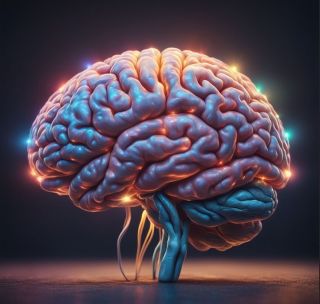Genetics
Alzheimer's Researchers Form Neurons From Skin Cells via MicroRNA
Researchers have created neurons by converting a patient’s skin cells with microRNAs.
Posted August 4, 2024 Reviewed by Abigail Fagan

Scientists may have discovered an innovative method to address one of the major challenges in neurodegenerative disease research. Last Friday, a study published in Science by researchers at Washington University School of Medicine in St. Louis demonstrated a novel way to create a more realistic environment for studying late-onset Alzheimer’s by converting a patient’s own skin cells into neurons using microRNAs to reveal important findings.
“Late-onset Alzheimer’s disease (LOAD) is the most common form of Alzheimer’s disease (AD),” wrote senior author Andrew Yoo, Ph.D., a professor of developmental biology at WashU Medicine along with his study co-authors. “However, modeling sporadic LOAD that endogenously captures hallmark neuronal pathologies such as amyloid-β (Aβ) deposition, tau tangles, and neuronal loss remains an unmet need.”
Late-onset AD is the most common form of late-onset dementia that starts after age 65. Symptoms may include challenges with memory, behavior, communication, executive function, and other cognitive functions. Late-onset AD accounts for more than 95% of cases. Roughly 5% of cases are early-onset AD, which are people under the age of 65 with Alzheimer's disease.
An overall challenge in neuroscience is the ability to conduct in vivo brain research in living humans. Given such barriers, scientists have turned to growing brain cells in a laboratory dish using human induced pluripotent stem cells (iPSC) engineering, a process discovered by Shinya Yamanaka, MD, Ph.D., in 2006. Yamanaka was later honored in 2012 with the Nobel Prize in Physiology or Medicine along with British developmental biologist Sir John Gurdon.
Induced pluripotent stem cells are adult cells that have been genetically reprogrammed to act in an embryonic-like pluripotent state. Pluripotent stem cells can become any type of cell. But there is a drawback to using stem cells and reprogramming to study late-onset Alzheimer's disease. The age signature of donor cells is eliminated in the process of inducing pluripotency in body cells. The resultant brain cells generated via iPSC have qualities similar to fetal neurons, and therefore are not optimal for studying a disease that impacts elderly neurons.
For this study, the researchers aimed to reprogram samples of adult body cells of Alzheimer's disease patients into neurons in efforts to preserve age-related characteristics using brain-enriched microRNAs (miRNAs). The scientists used microRNAs to reprogram adult fibroblast samples of skin cells from Alzheimer's disease patients and healthy controls into cortical neurons. In all, the study used skin cells from 26 people consisting of six patients with late-onset Alzheimer's disease, four patients diagnosed with autosomal dominant Alzheimer's disease (ADAD) which is a rare form of inherited Alzheimer's disease caused by genetic mutation that comprises less than one percent of all Alzheimer's disease cases, and 16 healthy donors with comparable age and gender profiles.
The reprogrammed cells demonstrated electrical activity. These lab-created neurons are cultured in a thin layer of gel to form small three-dimensional masses of self-assembled neuronal spheroids for a more realistic brain model.
The researchers discovered that the spheroids created from the reprogrammed skin cells of Alzheimer's disease patients rapidly developed tau tangles, extracellular amyloid-β deposits, and neurodegeneration. The spheroids from older donors without Alzheimer's disease did show some amyloid deposits but were significantly less than those without the disease. The neurons derived from patients with late-onset Alzheimer's disease also showed changes in gene expression affiliated with neuroinflammation.
The scientists also discovered that neurodegeneration, tauopathy, and the build-up of amyloid-β deposits could be decreased in the neurons and spheroids derived from patients with late-onset Alzheimer's disease if treatment using amyloid precursor protein (APP) inhibitors is done prior to the formation of amyloid-β deposits.
If the inhibitor treatment is initiated after amyloid-β deposits have formed, the impact is weak. This emphasizes the importance of early diagnosis and intervention for treatment of those with late-onset Alzheimer's disease.
Next, the researchers discovered when they used an anti-retroviral called lamivudine (3TC) to treat the neurons and spheroids derived from patients with late-onset Alzheimer's disease, it significantly reduced amyloid-β, DNA damage, tau aggregation, and even neuronal death.
The successful demonstration of using microRNAs to convert skin cells of late-onset Alzheimer's disease patients into 3D cultured neurons that incorporate aging characteristics enables scientists to conduct tests noninvasively without requiring samples of the patient’s brain. This innovative technique may accelerate personalized treatment and precision medicine for neurodegenerative disorders based on evaluating target genes or medications in the future.
Copyright © 2024 Cami Rosso All rights reserved.




